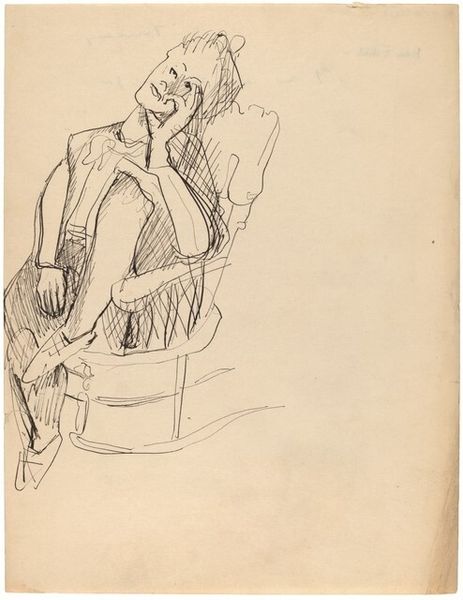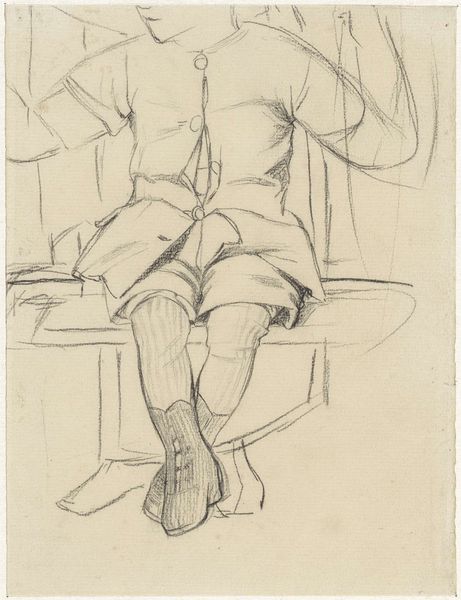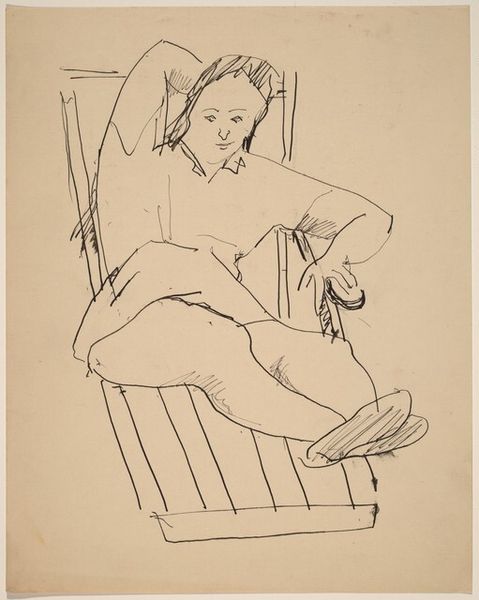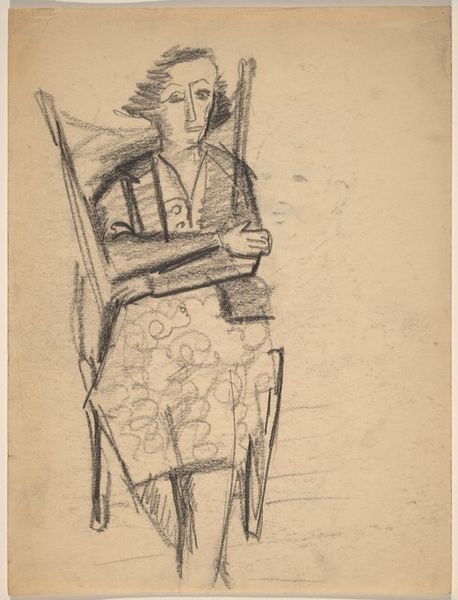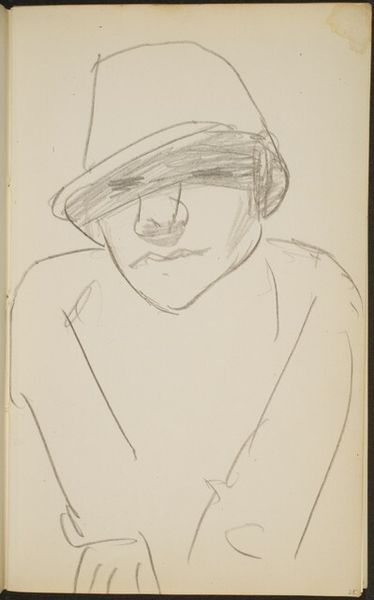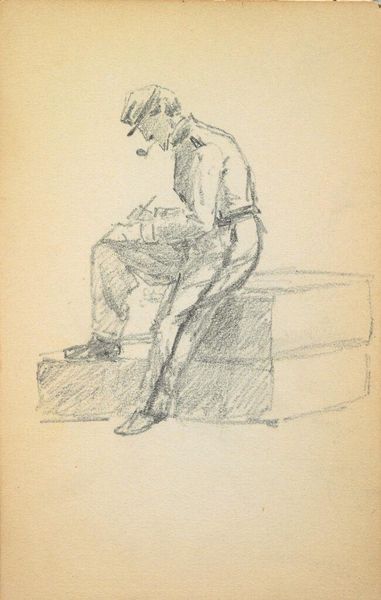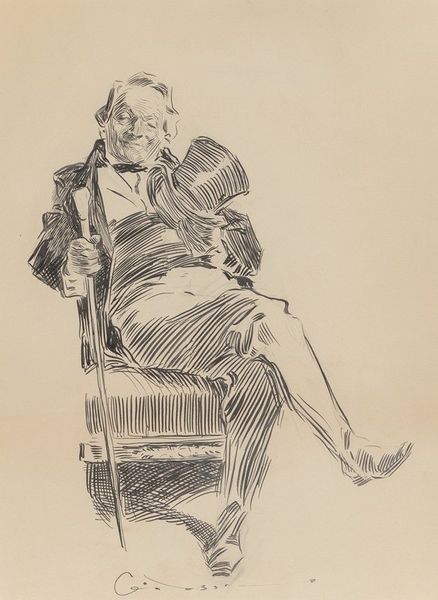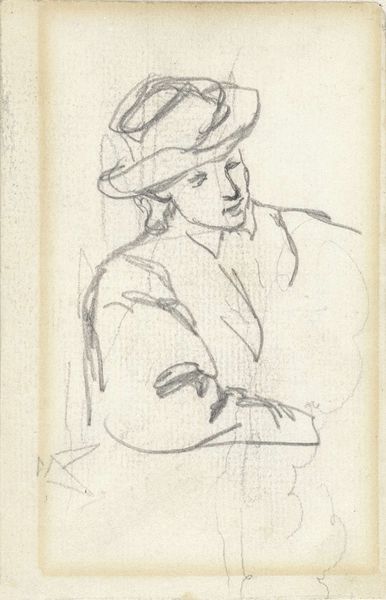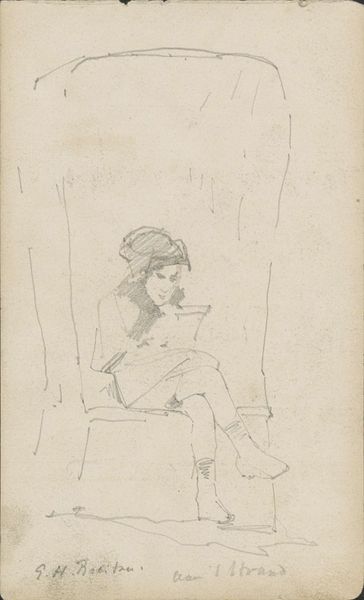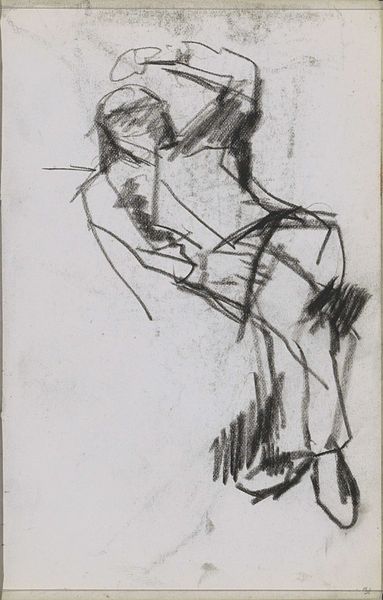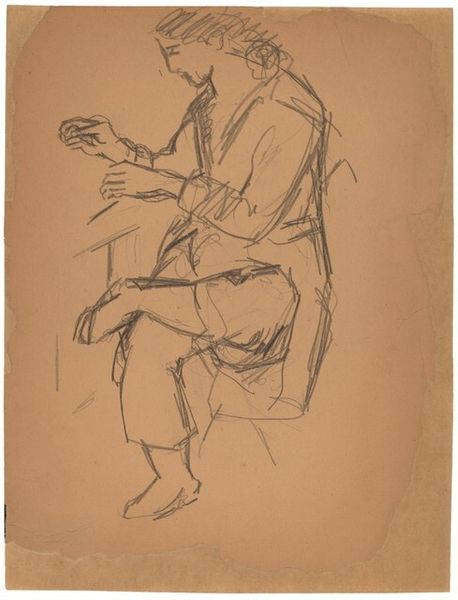
Copyright: Public Domain: Artvee
Curator: This pencil drawing, by Magnus Enckell, is titled "Istuva mies lakki päässä, luonnos," which translates to "Seated Man with a Cap, Sketch." It dates from 1902-1903. What's your first impression? Editor: There's a quiet, almost melancholy mood emanating from this figure. The use of pencil lends a delicate quality, and the composition, with the figure leaning against the support structure, enhances the feeling of introspection. Curator: Absolutely. Enckell’s masterful use of line is striking. Notice the varying pressure applied to the pencil, creating depth and shadow. The hatching technique, particularly in the figure’s clothing, adds to the sense of volume and texture. What do you think the artist is trying to communicate? Editor: Looking at Enckell's background and the time frame, it feels rooted in early 20th-century social realism. Sketches such as this could be seen as documents, humanising everyday figures rather than focusing solely on the elite, it portrays the social fabric of the era, perhaps revealing an undercurrent of quiet resignation. Curator: That’s a strong point. From a formalist perspective, consider how the repeated angularity – the hat's brim, the folded limbs, the lines of the chair – contribute to the overall visual dynamic. Even the subject is angled in space as we viewers perceive him, in doing so that provides an impression of depth. Editor: Enckell captures something so intrinsically human in this relaxed but forlorn pose, but did these sorts of quiet observations ever serve a more politically pointed aim, I wonder. Maybe a challenge to the period's idealized portraiture? Curator: Interesting thought. The rapid sketch-like nature may indeed represent a rebellion against more established genres and practices within the Salon system. The composition doesn't suggest that Enckell thought this portrait would have more weight or importance, though. It's almost casual in appearance, yet still technically adept. Editor: I agree; the apparent ease is deceptive. But perhaps the subject would have stood out more amongst other figures during Enckell's time. A man, resting perhaps after his work, in quiet contemplation; not an elite in shining clothes. Curator: Well, pondering those implications certainly enriched my appreciation for Enckell's technique, the semiotic charge in the very form. Editor: Yes, for me as well, considering the broader cultural landscape allows the artwork to echo more profoundly into present.
Comments
No comments
Be the first to comment and join the conversation on the ultimate creative platform.
